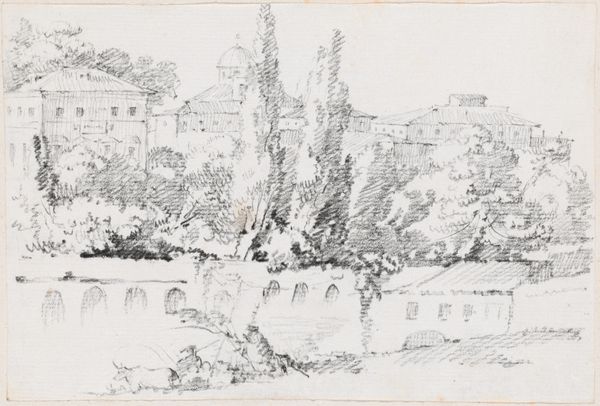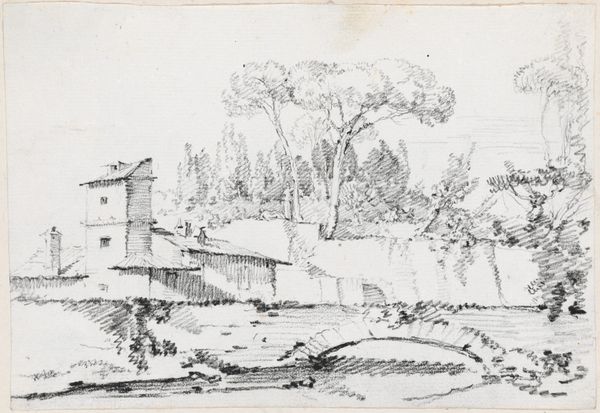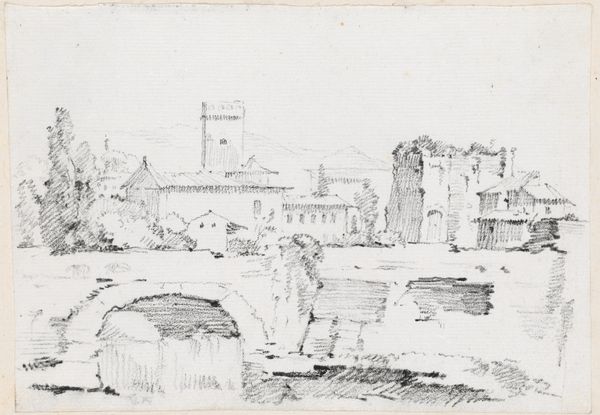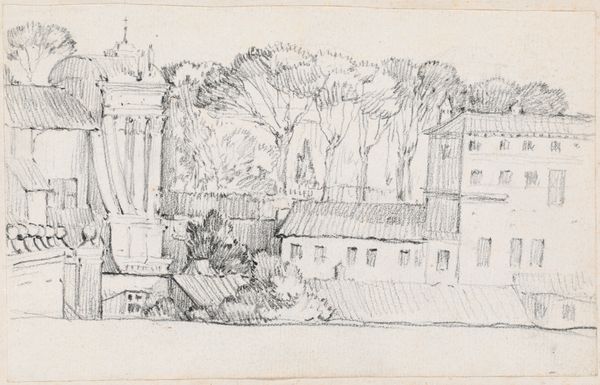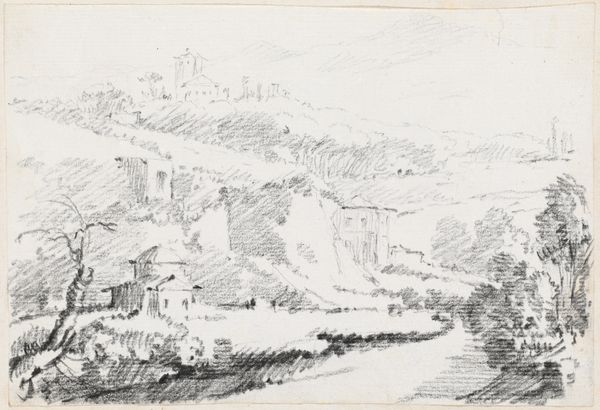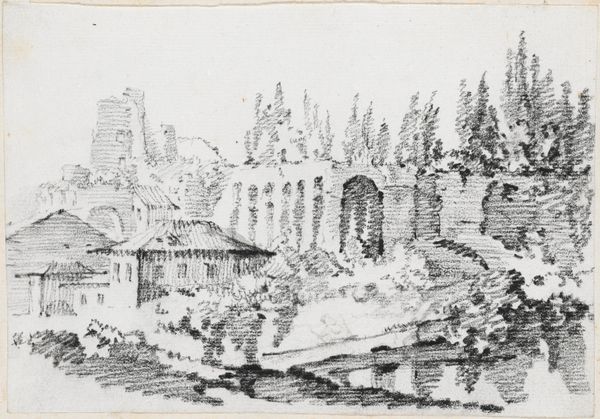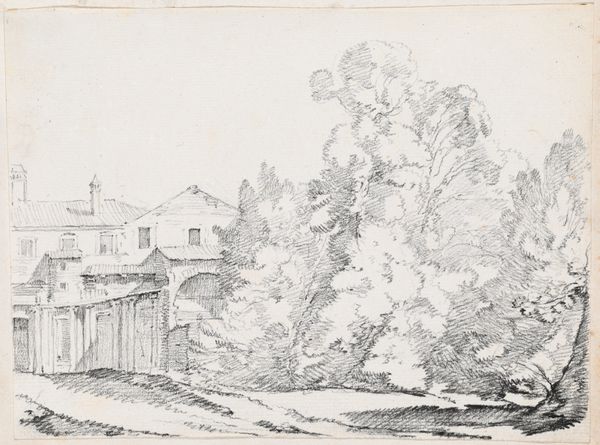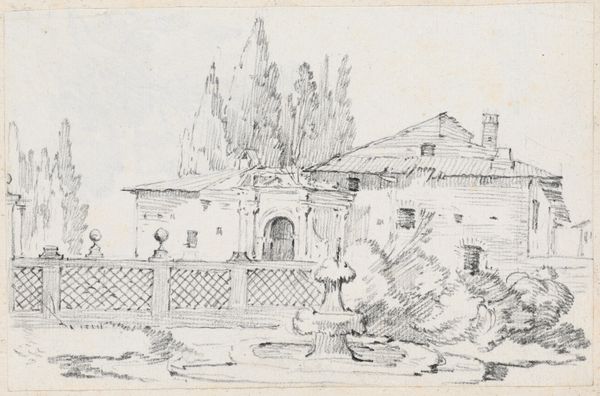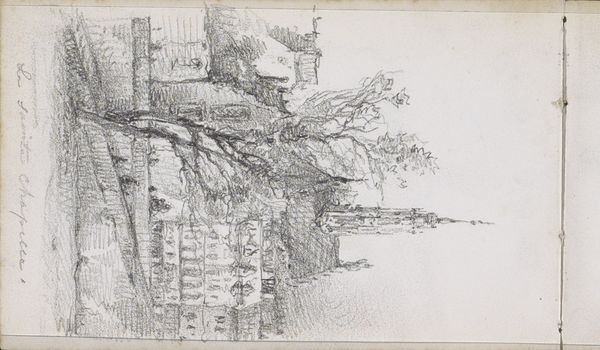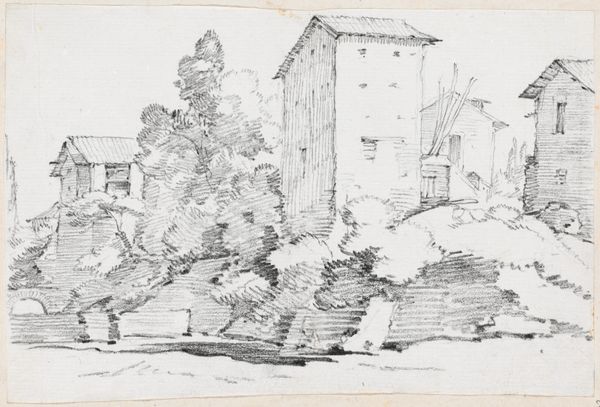
drawing, pencil
#
drawing
#
neoclassicism
#
landscape
#
etching
#
pencil
#
cityscape
Dimensions: sheet: 12.9 x 18.9 cm (5 1/16 x 7 7/16 in.) page size: 42.5 x 27.7 cm (16 3/4 x 10 7/8 in.)
Copyright: National Gallery of Art: CC0 1.0
Curator: The artwork before us, created between 1744 and 1750 by Joseph Marie Vien, offers a glimpse of Rome through a neoclassical lens; it’s entitled “Castel Sant’Angelo from the Northwest.” Editor: It's striking. There's a rawness to it, the graphite laying down these immediate, almost brutal marks describing form. The strong shadows give it real depth. Curator: Vien’s depiction of Castel Sant’Angelo serves as a case study in how the city and its monuments were reimagined during a time marked by a return to classical ideals, prompting a new era of archaeological investigation, patronage, and artistic creation. Consider how representations of landscape informed perceptions of Roman identity. Editor: I see the geometry. The planes of that building to the left and the Castel itself. They're almost abstracted by this strong contrast of light and shade. It flattens them. How would you situate Vien's rendering within the picturesque movement? The pencil creates a sort of proto-photographic impression. Curator: By portraying the castle from this particular angle, the artist situates it within a narrative—an intentional gesture towards a monumental legacy appropriated by Papal authority. Look how the dark shading contrasts the sun-drenched heights. Vien isn’t just showing us a monument, he's commenting on the structure of power itself. Editor: The stark rendering also obscures and creates some tension between specificity and generality. It has these little semiotic details – what is being said through a tree represented in such stark contrasts? It creates movement; not just toward something specific in the composition but between different meanings. Curator: Right, there’s certainly a dialogue to be had around what Vien chooses to highlight and, equally, what he obscures, a reflection, perhaps, on the elusiveness of truth. This sketch really encapsulates the dynamic between antiquity, power, and artistic license. Editor: It's more than just topography; it's a meditation on how light and shade alter perceptions. The interplay becomes more fascinating each time.
Comments
No comments
Be the first to comment and join the conversation on the ultimate creative platform.

